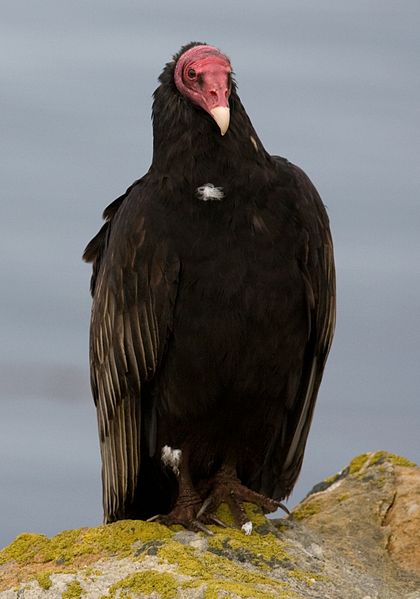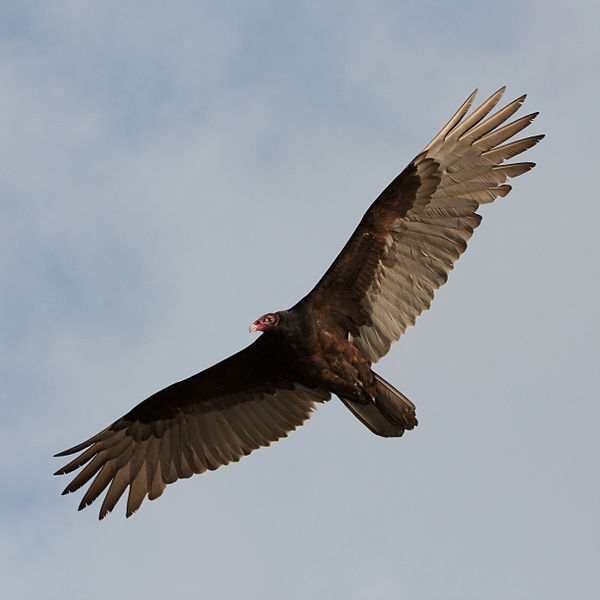Vultures, although maginificent on the wing and useful in "public sanatation," are often reviled because of their unpleasant facial appearance and putrid diet.
All the same, vultures, whether those of the Old or New World, are rather interesting creatures. I recall the remark of Aristotle in his work on the Parts of Animals, De Partibus Animalis: "We therefore must not recoil with childish aversion from the examination of the humbler animals. Every realm of nature is marvellous."
The vultures of the New World constitute their own taxonomic family, Catharidae, from the Greek Cathartes, or purifier. This family includes five species of vulture, and two species of condor.
In the United States, we enjoy three species in this family: the famous, but rare, California Condor (Gymnogyps californianus), and the rather common Turkey Vulture (Cathartes aura) and Black Vulture (Coragyps atratus).
The Turkey Vulture (Cathartes aura) is probably the most familiar of the group for most Americans. They boast a keen sense of smell, rare for birds, and a six-foot wing span. The shallow "V" formed by their wings when they soar is distinctive. Nothing looks quite like a Turkey Vulture from below.


Turkey Vulture (Cathartes aura)
The Black Vulture (Coragyps atratus), common in the Southeast United States, are smaller than the Turkey Vulture, and lack the keen sense of smell. They make up for this by being more aggressive. They are easy to spot with their frequent choppy wing-beats and white-tipped wings.


Black Vulture (Coragyps atratus)
I will note two other species of New World Vulture (Catharidae), both found in the tropics: the King Vulture (Sarcoramphus papa) and Andean Condor (Vultur gryphus).
In the video that follows, the rather gaudy-looking King Vulture (Sarcoramphus papa), found in Central America and northern South America, and a favorite of the Maya, is shown up close and personal:
This next video features the enormous Andean Condor (Vultur gryphus), associated with the Incas of old:
Finally, a word about the Old World Vultures, where are taxonomically in the same family with hawks and eagles, Acciptridae, rather than the New World Vultures. They are in their own subfamily, however, Aegypiinae.
The video below presents two of these species, the Egyptian Vulture (Neophron percnopterus), famous for its use of stones to crack open otherwise unaccesible eggs, as shown in the video,
and the massive Lappet-faced Vulture (Torgos tracheliotos). Enjoy!
Lastly, this video featuring the Bearded Vulture (Gypaetus barbatus), also known as the Lammergeier, is a bit macabre, but remember your Aristotle. It is quite amazing how this species, like the Egyptian Vulture, is able to access otherwise unaccessible food!
Live well!
No comments:
Post a Comment